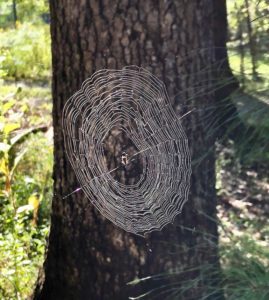
– Photo by Chuck Ketchel
So much emphasis is placed upon the heart as the spiritual center that guides right action. This can seem extremely confusing when compared to popular renditions of the heart as the center for romantic love and longing. After all, how often do romantic projections result in right action?
It is true that the heart is connected to loving attachments. A broken heart, through loss of a loved one, is indeed an informal diagnosis known to many a cardiologist. It is equally true that the heart is the meeting place with one’s High Self, the spirit center of one’s being. In the quiet of the heart, the High Self tells the truth to ego consciousness, regardless of the ego’s wish for a different answer.
Thus, the heart can be said to function on many levels: from the immature cravings of the desire body, to the vicissitudes of love and attachment in relationships, to a highly refined impartiality that lovingly accepts everything, without personal resistance; this is the position of the mature heart.
Humans are multidimensional beings living many simultaneous lives. Even in the single dimension of waking life one may be dominated by the cravings of the desire body at the breakfast table, the stirrings of romantic interest in the afternoon, and deep communion with High Self in the evening.
A mature heart is not necessarily achieved via a linear developmental progression. One can be working on different dimensions of heart issues, literally, depending upon the time of day. Ultimately, however, a connection to the mature heart is necessary to resolve the clouded entanglements of need, desire, and attachment.
The mental plane immediately impacts the central nervous system, which greatly affects the heart. Thus, if one has the thought that there is a problem, messages are immediately delivered through the nerves to various glands and organs to respond to the abstract thought. A thus-activated body might stir the heart to heated action, even though there is actually no real crisis.
To promote the conditions to access the mature heart it is a good practice to engage in control of the fickle mind. Any meditation practice trains the ego to still its activity, as consciousness learns to be mindfully present to a single focus, such as the breath. Control of the mind promotes the inner silence that allows one to hear the voice of the High Self in the quiet of the heart.
Autogenic phrases, self-hypnosis, deep relaxation, biofeedback, as well as neurofeedback, are Western technological tools that promote thought control and calm the heart. In essence, all these practices introduce new programs to the subconscious mind that regulate the central nervous system, giving the ego control over automatic reactions to stray thoughts.
Recapitulation, the reliving and releasing of split-off parts of life experiences, frees the central nervous system of random activation by associative triggers in one’s daily life encounters. Once the ego has fully squared with a suppressed or repressed experience, the heart is freed of invasive shocks that preclude the quiet of spiritual connection.
Yogic science has produced pranayama breathing techniques that directly influence the balance of positive and negative electrical energy that flows through the central nervous system. Alternate nostril breathing (sukh purvak) directly addresses the rebalancing of these forces. Any physical practice that brings deep calm to the body gives the ego an opportunity to control the mind and the body, and to open to the spiritual dimension of the heart.
Upon reaching the position of the mature heart, one is guided to successfully navigate the many lives one lives. Most importantly, in the place of the mature heart, one receives and expresses the fullness of loving compassion, with equanimity. Furthermore, one is empowered to act upon right action without sentimental restraint. For the mature heart loves, most of all, the truth.
With love from the mature heart,
Chuck



